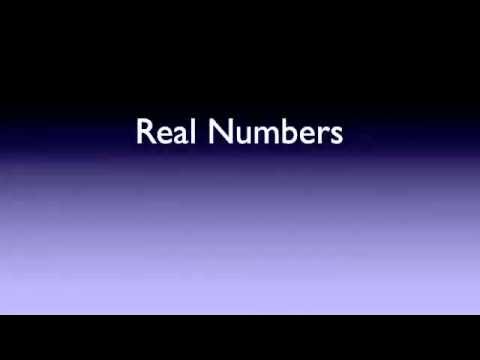Conjuntos Numéricos: Números Naturais e Inteiros (Aula 1 de 4)
Summary
TLDRThis lesson in mathematics explores numerical sets, specifically focusing on natural numbers and integers. The teacher introduces natural numbers, both with and without zero, and discusses the importance of integers in handling operations like subtraction that yield negative results. Various subsets of integers are presented, including non-negative, positive, and negative integers. The lecture concludes with interactive exercises to test understanding of key concepts, including set relations like containment, union, and intersection, as well as operations such as addition, multiplication, and division. The teacher emphasizes how these number sets lay the foundation for more complex mathematical concepts.
Takeaways
- 😀 The lesson focuses on numeric sets, specifically natural numbers and integers, with a total of four classes in the course.
- 😀 The set of natural numbers starts from 0 and includes all positive integers, extending infinitely (0, 1, 2, 3, ...).
- 😀 The set of natural numbers has an important subset, the non-zero natural numbers, represented by 1, 2, 3, and so on, excluding 0.
- 😀 Integers (Z) include both positive and negative whole numbers, as well as zero. The set spans from negative infinity to positive infinity.
- 😀 Subtraction of natural numbers may result in an integer not belonging to the set of natural numbers (e.g., 3 - 8 = -5), which led to the creation of the set of integers.
- 😀 The natural numbers are a subset of the integers, meaning all natural numbers are integers, but not all integers are natural numbers.
- 😀 The set of integers includes symmetric elements, where each positive integer has a corresponding negative integer (e.g., the opposite of 3 is -3).
- 😀 Important subsets of integers include non-null integers (excluding 0), non-negative integers (including 0), positive integers (excluding 0), non-positive integers (including 0), and negative integers.
- 😀 The union of the natural numbers and non-positive integers results in the full set of integers.
- 😀 The intersection of non-negative and non-positive integers results in only the number 0, which is a key point in understanding the relationship between these subsets.
Q & A
What are the natural numbers, and how are they represented?
-Natural numbers are the counting numbers starting from zero, and they are represented by the symbol {0, 1, 2, 3, 4, 5, ...}. These numbers are infinite and include zero and all positive integers.
What is a subset of natural numbers excluding zero, and what is its symbol?
-The subset of natural numbers excluding zero is known as 'non-zero natural numbers'. It is represented by the symbol {1, 2, 3, 4, 5, ...}, which excludes the number 0.
How are integers different from natural numbers?
-Integers include all natural numbers, their negative counterparts, and zero. The set of integers is represented by {..., -3, -2, -1, 0, 1, 2, 3, ...}, unlike natural numbers which only include zero and positive integers.
Why was the set of integers created?
-The set of integers was created to handle situations where operations such as subtraction resulted in values that do not belong to the set of natural numbers, such as when subtracting a larger number from a smaller one (e.g., 3 - 8 = -5).
What does the symbol 'Z' represent in mathematics?
-The symbol 'Z' represents the set of integers, which includes both positive and negative whole numbers, as well as zero. It is derived from the German word 'Zahlen', which means 'numbers'.
What is the relationship between natural numbers and integers?
-Natural numbers are a subset of integers. Every natural number is an integer, but not every integer is a natural number. Therefore, the set of natural numbers is contained within the set of integers.
What is meant by the 'opposite' or 'symmetry' of an integer?
-The 'opposite' or 'symmetry' of an integer refers to the negative counterpart of a number. For example, the opposite of 3 is -3, and the opposite of -10 is 10. This symmetry exists in the set of integers.
What are some important subsets of the set of integers?
-Some important subsets of integers include: non-zero integers (excluding 0), non-negative integers (which include 0 and positive integers), positive integers (which exclude 0 and negative numbers), and negative integers (which exclude 0 and positive numbers).
How does the concept of 'union' work when combining sets of numbers?
-The 'union' of two sets combines all the elements from both sets. For example, the union of natural numbers and non-positive integers results in the set of all integers, because the non-positive integers include all negative integers and zero, while the natural numbers include all positive integers.
What is the intersection of two sets of integers, such as non-negative and non-positive integers?
-The intersection of non-negative and non-positive integers is the set that contains only the elements that appear in both sets. Since both sets include zero, the intersection is the set containing just {0}.
Outlines

This section is available to paid users only. Please upgrade to access this part.
Upgrade NowMindmap

This section is available to paid users only. Please upgrade to access this part.
Upgrade NowKeywords

This section is available to paid users only. Please upgrade to access this part.
Upgrade NowHighlights

This section is available to paid users only. Please upgrade to access this part.
Upgrade NowTranscripts

This section is available to paid users only. Please upgrade to access this part.
Upgrade Now5.0 / 5 (0 votes)





